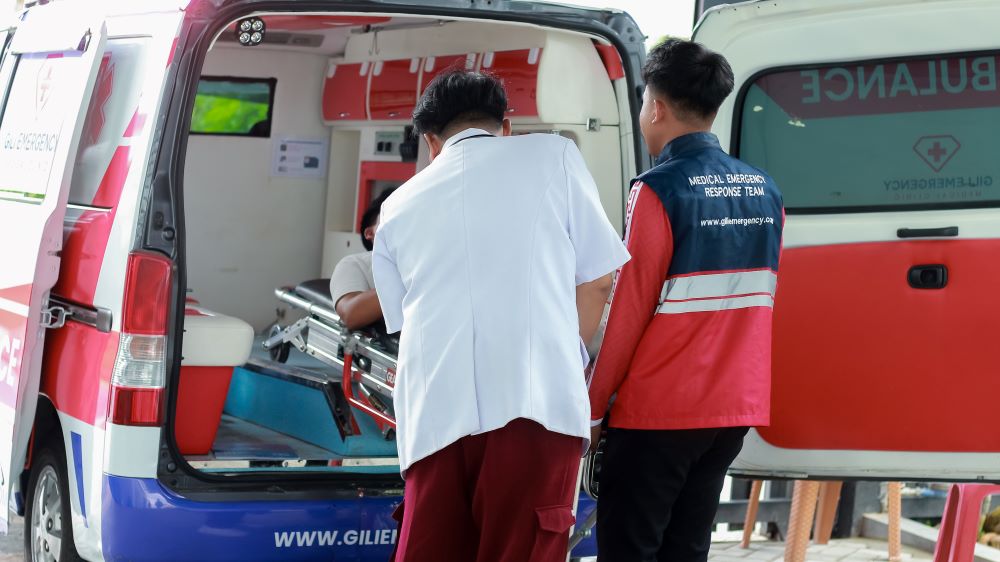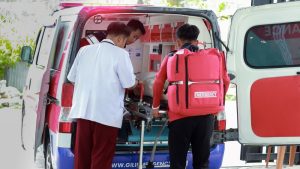Ever wondered what actually happens when someone needs a Gili T ambulance to Bali? I remember the first time a traveler told me they thought an “island ambulance” meant a normal van waiting at the port. Nope. On Gili Trawangan—where there are no cars—the whole rescue chain feels like a mix of adrenaline, ocean breeze, and absolute coordination.
If you’ve ever visited Gili T, you know how magical it feels: the soft sand under your feet, the scent of the ocean, the rhythmic clop of cidomo horses. But when a medical emergency strikes, the vibe shifts instantly—your senses sharpen, sounds feel louder, and time moves strangely fast. That’s where a reliable Gili T ambulance to Bali becomes a lifesaver.
In this article, I’ll walk you through everything you need to know—practical, real, and from the perspective of someone who’s seen travelers panic because they didn’t understand how medical evacuation here works.
Let’s dive in.
Understanding How Emergency Evacuation Works on Gili T
Here’s the thing about Gili T: no cars, no big ambulances, no asphalt roads. So when you call for help, the process is unique.
The Gili emergency service usually starts with a small medical team arriving by bicycle, motorized cart, or electric vehicle—depending on the provider. In severe cases, they stabilize the patient and transport them to the Gili medical clinic for assessment.
From there, if you need hospital care, the only full evacuation route is a Gili T ambulance to Bali, usually involving:
-
A stretcher transfer
-
A medical speedboat
-
A ground ambulance in Bali
It sounds intense, right? But it’s surprisingly smooth when handled by experienced teams.
And… honestly? Watching a medical speedboat cut through the turquoise water with sirens echoing across the sea is something you don’t easily forget.
Why a Gili T Ambulance to Bali Is Usually Unavoidable for Serious Cases
Let’s be real: Gili T’s medical facilities are limited. The Gili medical clinic can handle:
-
Minor injuries
-
Dehydration
-
Tropical illnesses
-
Basic trauma
-
Stabilization
But if you have:
-
Severe fractures
-
Appendicitis
-
Cardiac issues
-
Major infections
-
Diving-related injuries
…you’ll almost always be recommended for a Gili T ambulance to Bali.
It’s not about the clinic lacking skill—it’s about the island’s size and resources. Denpasar and Mataram simply offer better-equipped hospitals. And when minutes matter, you need the right gear and specialists.
How the Transportation Chain Works (Step-by-Step)
Let me walk you through the real sequence, because understanding it reduces panic.
1. Initial Assessment
A doctor or medic at the nearest Gili medical clinic evaluates you.
You’ll hear questions like:
“Can you move your fingers?”
“Do you feel dizzy?”
2. Stabilization
If needed, they’ll provide oxygen, pain relief, or basic trauma care. Sensory details kick in here—cold metal instruments, the smell of antiseptic, the buzzing energy of urgency.
3. Transfer to the Shore
The local ambulance Gili—usually a small emergency cart—takes you to the harbor.
This is where people often think, “Wait… this is the ambulance?”
Yes. And it works.
4. Speedboat Evacuation
A medical crew boards you onto a fully equipped emergency boat.
This is the actual backbone of a Gili T ambulance to Bali.
Inside, it’s compact but efficient:
-
Medical stretcher
-
Oxygen
-
Heart monitor
-
Emergency drugs
5. Bali Ambulance Pickup
Once the boat reaches Padangbai or Serangan, a standard ambulance is waiting to take you to a Bali hospital.
By the time you arrive, the team has already contacted the hospital with your condition details.
Smooth. Coordinated. Life-saving.
Costs You Should Expect
Let’s be honest—most people are shocked at the price of a Gili T ambulance to Bali. While costs vary, medical speedboat evacuations are never cheap.
Most travelers pay for:
-
On-island emergency assistance
-
Speedboat medical evacuation
-
Bali ambulance
-
Clinic treatment
-
Doctor’s fees
Travel insurance helps. A lot.
If you don’t have it… well, let’s just say you’ll feel the “ouch” long before the hospital needle goes in.
When Do You Really Need a Gili T Ambulance to Bali?
Here are common real-life scenarios I’ve personally seen on Gili T:
-
A diver experienced decompression sickness after a deep dive
-
Someone fainted from heatstroke during a beach run
-
A cyclist crashed at night and hit coral
-
A tourist developed acute appendicitis at 2 a.m.
-
A guest had a severe asthma attack without medication
In these moments, the Gili emergency service doesn’t hesitate—they activate the full chain.
If you’re ever unsure, here’s a mental shortcut:
If it feels serious and you’re asking yourself twice whether you should go to Bali—go.
How to Prepare Yourself Before Visiting Gili T
Okay, friend-to-friend talk: don’t wait for an emergency to learn these tips.
✔ Save hotline numbers
Local clinics and emergency boat providers should be in your phone.
✔ Know where the nearest Gili medical clinic is
Especially if you’re staying far from the center.
✔ Check your insurance coverage
Make sure it includes evacuation—many don’t.
✔ Avoid risky night biking
You don’t want your vacation to end with a headlamp-and-coral disaster.
✔ Stay hydrated
Over half of the cases I’ve seen began with dehydration.
Preparation reduces panic. And it gives you peace of mind as you enjoy the island’s magic.
What Most Tourists Don’t Know About Gili Medical Services
Here’s a little behind-the-scenes truth.
The teams running the ambulance Gili, Gili medical clinic, and Gili emergency service are incredibly experienced. Many trained in Bali or Lombok before serving on the island.
Every time someone says, “I didn’t expect such professionalism on a tiny island,” I smile.
Because that’s exactly the point—they’re quietly heroic.
And when you see the coordination of a Gili T ambulance to Bali, you’ll understand how much dedication goes into every step.
Don’t Panic—Just Be Prepared
If you’re planning a trip and worrying about emergencies, breathe.
You now know exactly how a Gili T ambulance to Bali works, what to expect, and who’s involved.
And remember this: the island may be small, but the medical response is strong.
As long as you stay aware, listen to your body, and keep emergency contacts ready, you’ll be able to enjoy Gili T with total confidence.
Safe travels, and see you on the sand.











